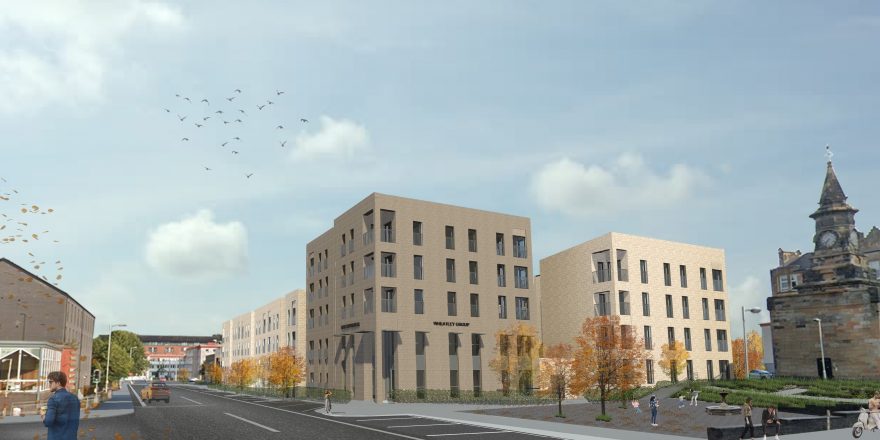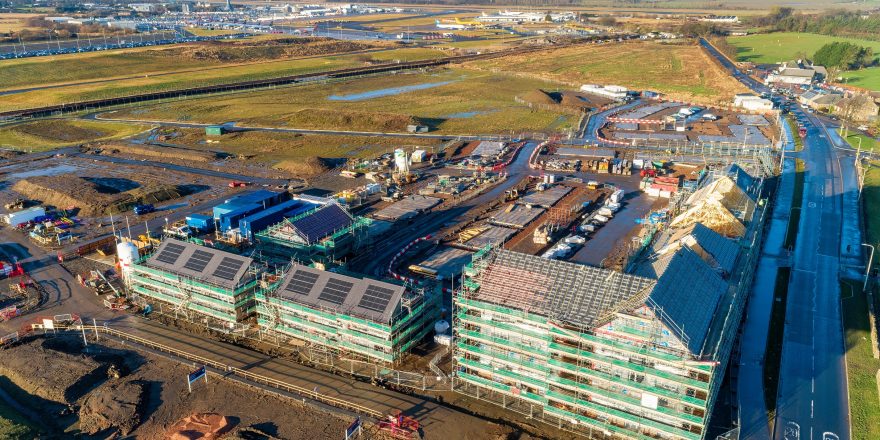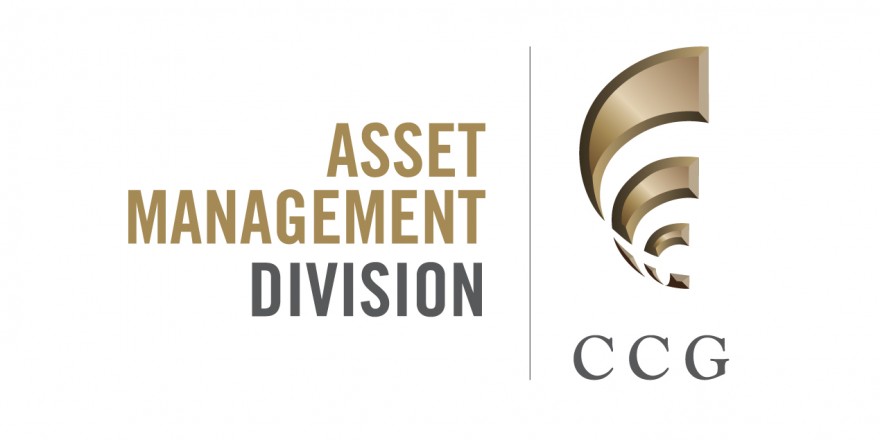107 NIDDRIE ROAD, GLASGOW
The Scottish Government is to become a ‘net zero’ economy by 2045. The Construction industry will play a vital role in achieving our ambitious targets through new build housing delivery and retrofitting existing homes but there are fewer challenges facing cities like Glasgow than the traditional tenement…
The scale of the task presented by decarbonisation cannot be understated: over 80% of homes that will exist in Scotland by 2050 will already be built which means if we are to reach our legal target of being net zero by 2045, the retrofitting of our homes and buildings is essential.
To reach this target, The Scottish Government recently announced a consultation on a revision to the Heat in Buildings Standard which sets out a new range of milestones as part of a “just transition” to decarbonise our homes and buildings. It includes the adoption of zero-direct emissions (“clean”) heating systems and a minimum energy efficiency standard for all rented properties by the end of 2028 followed by all owner-occupied homes by the end of 2033.
Glasgow is taking steps to understand the viability of retrofitting existing buildings with a key focus on how 75,000 tenement flats in the city region, under public and private ownership, can be upgraded whilst respecting architectural heritage. Step in 107 Niddrie Road…
107 Niddrie Road, located in the Southside of Glasgow, was a pilot project commissioned by Glasgow City Council, in partnership with Southside Housing Association, and part-funded by the Scottish Government as a means of understanding the complexity and cost associated with retrofitting tenemental properties.
CCG was appointed as the Main Contractor and worked with John Gilbert Architects to upgrade what was an entirely vacant end terrace consisting of eight two-bedroom flats to an enhanced building performance standard known as EnerPHit.
EnerPHit is the retrofit version of the better-known ‘Passivhaus’ standard used on new buildings and 107 Niddrie Road represents the first time the design parameters have been tested on a sandstone tenement in Scotland as a means of establishing a range of pointers of how architectural heritage could be safeguarded whilst still addressing the climate and fuel poverty agendas.
The project involved high levels of insulation to the roof, floors and walls, with external insulation installed on the outside of the walls at the rear, but inside the walls facing the street. Windows were replaced with triple-glazed alternatives and a lime plaster was used throughout to drastically improve the levels of airtightness.
MVHR (Mechanical Ventilation with Heat Recovery) was used to recycle warmth from outgoing air and waste water heat was also recovered. The street-facing stonework was carefully restored and improvements and repairs were made to the roof area.
Gas boilers were replaced in four of the flats while the remaining, upper-floor flats have been fitted with air-source heat pumps and all flats will be monitored to assess their performance over the next year or two. The addition of Waste Water Heat Recovery from the shower or bath drains will contribute a saving on costs and emissions from hot water services by as much as 40%.
The results of the architectural design and works on-site ultimately did not reach EnerPHit but 107 Niddrie Road is still one of the most energy-efficient buildings of its kind in Scotland.
With a 2-year post-occupancy evaluation underway – led by The University of Glasgow and the University of Strathclyde – it is expected tenants will use somewhere between 5% and 20% of typical fuel bills compared with similar-aged buildings and flat types.
107 Niddrie Road was officially completed in late-2022.
Client:
Southside HA
Awards:
- GIA Award for Sustainability 2022
- Scottish Home Awards Conversion Development of the Year 2023
- Herald Property Awards Green Housing Award 2023










